Panoramic Photo Above:
Wrigley Field, Chicago

Baseball History Comes Alive Now Ranked As a Top Five Website by Feedspot Among All Baseball History Websites and Blogs!
(Check out Feedspot's list of the Top 35 Baseball History websites and blogs)
Guest Submissions from Our Readers Always Welcome! Click for details
Subscribe to Baseball History Comes Alive! for automatic updates (sign-up block found in right side-bar)
As a Free Bonus for subscribing, you’ll get instant access to my two Special Reports: Memorable World Series Moments and Gary’s Handy Dandy World Series Reference Guide!
Tom Seaver and the Miracle Mets Photo Gallery
Click on any image below to see photos in full size and to start Photo Gallery:
We welcome another guest post from Bill Schaefer, giving us a first-hand account of his interview Tom Seaver back in 1969, and also his reflections on that memorable season. It’s a great essay…although as a Cub fan, it pains me to remember 1969! -GL
TOM SEAVER INTERVIEW, PRELUDE TO A MIRACLE…AND MORE
It was Monday afternoon, April 14 1969, during the penultimate year of Connie Mack Stadium’s existence. The Mets would lose to the Philadelphia Phillies 5-1. It was the fourth game in a four-game losing streak for the Amazins. By late afternoon they would be 2-5 on the season. It was the same old “you know what” for a losing team.
But about an hour before the first pitch, News Director Phil Hubbard and I had flashed our press passes signifying we were from WOBM-FM in Toms River, NJ. The usher waved us right onto the field, past the field boxes, about halfway between home plate and third base. We were hot stuff, man! Not realizing luck was on our side, and that perhaps it would not be so easy another time. With our tape recorder all set to go, we spotted Tom Seaver doing wind sprints about 50 feet away down the left-field line.
Baseball’s first steel-and-concrete stadium loomed in the background, now a hideous anachronism, with a handful of fans rattling around in the sprawling, rickety lower grandstand. We got a little closer and I shouted, “Hey, Tom, could you spare a minute for a quick interview?” He immediately stopped in mid-sprint and came right over. I was too stunned to be nervous. He was super nice – treated me like I was Vin Scully. I blurted out a few banalities and then asked the Mets’ best pitcher, “Do you think the Mets, with a few breaks, might have the nucleus to be contenders this year?” (I didn’t believe a word of it, the Mets were coming off their best season since their inception in 1962. But they finished 73-89, still 16 games below the breakeven mark). Seaver responded enthusiastically, “Bill, as you say, with a few breaks I really think we have the talent to contend this year.” He pointed out pitching would be the key. I thanked him profusely. And the soon to be National League Cy Young winner went back to his wind sprints. Little did we know…
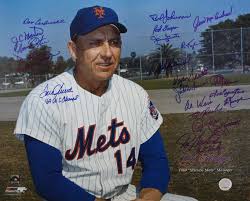
In 1969, they lowered the pitcher’s mound and the fortunes of the New York Metropolitans soared. It was the first season of the divisional format. For the first 41 games, they looked a tad better than for most of their brief history but were only 18-23 at the start of games on May 28. Then, Tom Seaver’s words about pitching resonated in a big way. In perhaps the best outing of his career, Jerry Koosman dominated the San Diego Padres for 10 innings, yielding no runs on just four hits and striking out 15 Padre batters! The Mets won 1-0 in 11 innings, with Buddy Harrelson driving in the winning run and Tug McGraw getting the W in relief. The victory started an 11 game winning streak and fans knew this was a different team.
A catalytic force in the Mets climb was the acquisition of Donn Clendenon on June 15, in a trade with the Montreal Expos, for pitcher Steve Renko, Kevin Collins, two minor leaguers and a player to be named later. Clendenon was a solid slugger for the Expos but in need of a change of scenery. Manager Gil Hodges platooned the righty power hitter with Ed Kranepool at first base in what proved a brilliant move. In just 202 at-bats, Clendenon clubbed 12 home runs with 37 RBI. Donn would be the World Series MVP with three homers and a .357 batting average.
But the Chicago Cubs got out of the gate 11-1. And before you could blink, they were 41-19 on June 15. On the same day, the Mets were 30-26. On June 30, the Sports Illustrated cover had a picture of rugged Ron Santo leading off first base with the headline, The Raucous New Cubs. Chicago had a nice team: Williams, Santo and Banks would account for 73 HR and 324 RBI. Beckert and Kessinger were a first-class double play combo. And the pitching was solid: Jenkins, Hands and Holtzman combined for 58 wins and Dick Selma could throw 100 mph. Phil Regan anchored the bullpen. The little bears were lapping up every minute of it, as was their fiery manager Leo Durocher. Santo would click his heels after every Wrigley Field win. This antic infuriated some but, what the heck – it was a harmless home crowd pleaser.
The night of July 9 saw the Mets tie the season’s series with the Cubs at five games apiece, winning 4-0. However, the real story was Tom Seaver’s near-perfect game. With one out in the top of the ninth, Jimmy Qualls lined a Tom Terrific off-speed pitch to left-center for a clean hit to spoil the perfect game and no-hitter. Nearly 60,000 at Shea were crushed when the ball fell safely. But they would have much to cheer about before the historic season ended.
It was a mesmerizing Mets baseball season. In January, it was said some casinos were offering 1000-to-1 odds against the Amazins winning the Fall Classic. But quietly a team under the auspices of lovable Gil Hodges was beginning to coalesce. Tommy Agee (26 HR) and Cleon Jones (.340 BA) were having career years. Don Clendenon was rejuvenated. And a starting rotation of Seaver (25-7, 2.21 ERA), Koosman (17-9, 2.28 ERA), Nolan Ryan and Gary Gentry, with Tug McGraw and Ron Taylor in the bullpen, comprised a formidable nucleus. Not to mention the remarkable Ron Swoboda, Art Shamsky, Grote, Garrett, Ed Charles, Al Weiss et al.
So, what happened? The Cubs held a nine-game lead over the Cardinals and Mets on August 17, with a 75-44 record. Then, in September, Chicago wilted under the pressure of the Mets’ relentless winning. They lost 11 of 12, September 3-15, going from 5 games up to 4 ½ games behind New York. From Sept. 6-18, the Mets went 13-1. The Cubs, playing games on the west coast, could see the Mets’ winning final score before they even started play.
On September 9 the Cubs lost the famous “Black Cat” game, in which a black cat walked past Ron Santo, in the on-deck circle at Shea Stadium, and allegedly stopped and stared at Leo Durocher.
Nolan Ryan tossed a three-hitter in the second game of a doubleheader, on September 10, leading the Mets to a victory over the expos and moving them into first place in the National East for the first time in franchise history.
The Cubs said Durocher was intractable and refused to rest anyone. He barely used Dick Selma down the stretch and pitched his top three starters until their arms hung like strings. Leo’s take was a little different, “I never saw anything like it in my life. Our offense went down the toilet. The defense went down the drain. And I’m still looking for the pitching staff. I could have dressed nine broads up as ballplayers and they would have beaten the Cubs.”
Ron Swoboda said this about his team, “We had the innocence of someone who had never been there before. We had that wonderful, clear-minded innocence…of not having to doubt ourselves if we stumbled. That’s a marvelous thing…the Cubs just found they were in a race with a faster horse.”
Ron Santo said, “What’s hard for me to believe is how we were eight games in front and lost by eight games. That just goes to show you that it was the year of the Mets and that God lives in New York.” Santo knew something. How else would you explain the Mets beating Steve Carlton and the Cards 4-3 on Sept. 15, with two 2-run home runs by Ron Swoboda, when Carlton set a major league record with 19 strikeouts? Or, winning both games of a twin bill on September 12, at Pittsburgh, by the identical scores of 1-0, with the winning pitchers Koosman and Cardwell knocking in the lone runs in each game?
The magic continued through the postseason. As Mickey Mantle exclaimed, “I never did see catches like that in a World Series!” Two gems by Tommie Agee that saved multiple runs and the greatest catch ever in a World Series by Ron Swoboda. His impossible grab, robbing Brooks Robinson in Game Four, kept the miracle alive and made sure the mighty Orioles would not likely take the Series back to Baltimore.
The 1969 Mets were the personification of team play. And Gil Hodges was the perfect manager for that group, never allowing his players to “put pressure above the pleasure of playing the game.”
At the end of this COVID 19 short form baseball season, we just might hear Peter Alonso, with champaign soaked hair, paraphrase Tom Seaver in the Mets locker room, 51 years ago, “We’re just a bunch of young kids who love to play this game!”
Bill Schaefer
Sources: Shibe Park, Connie Mack Stadium: History
Sports Illustrated-1969 archives
The Cubs’ collapse of 1969: An oral history-Chicago Tribune
1969 Mets schedule almanac
1969 Cubs schedule almanac
1969 Mets, Cubs rosters and stats
Shop MLB.com. The Official Online Shop of Major League Baseball.
Visit Our Web page: “Baseball History Comes Alive!” now with over 460K hits!:
http://wp.me/P7a04E-2he
Check out my latest book, recently nominated for the SABR 2020 Lawrence Ritter award: Reflections On the 1919 Black Sox: Time to Take Another Look now available on Amazon in e-book and paperback. All profits go to the Illinois Veterans Foundation
We are a participant in the Amazon Services LLC Associates Program, an affiliate advertising program designed to provide a means for us to earn fees by linking to Amazon.com and affiliated sites. Click here to view Amazon’s privacy policy
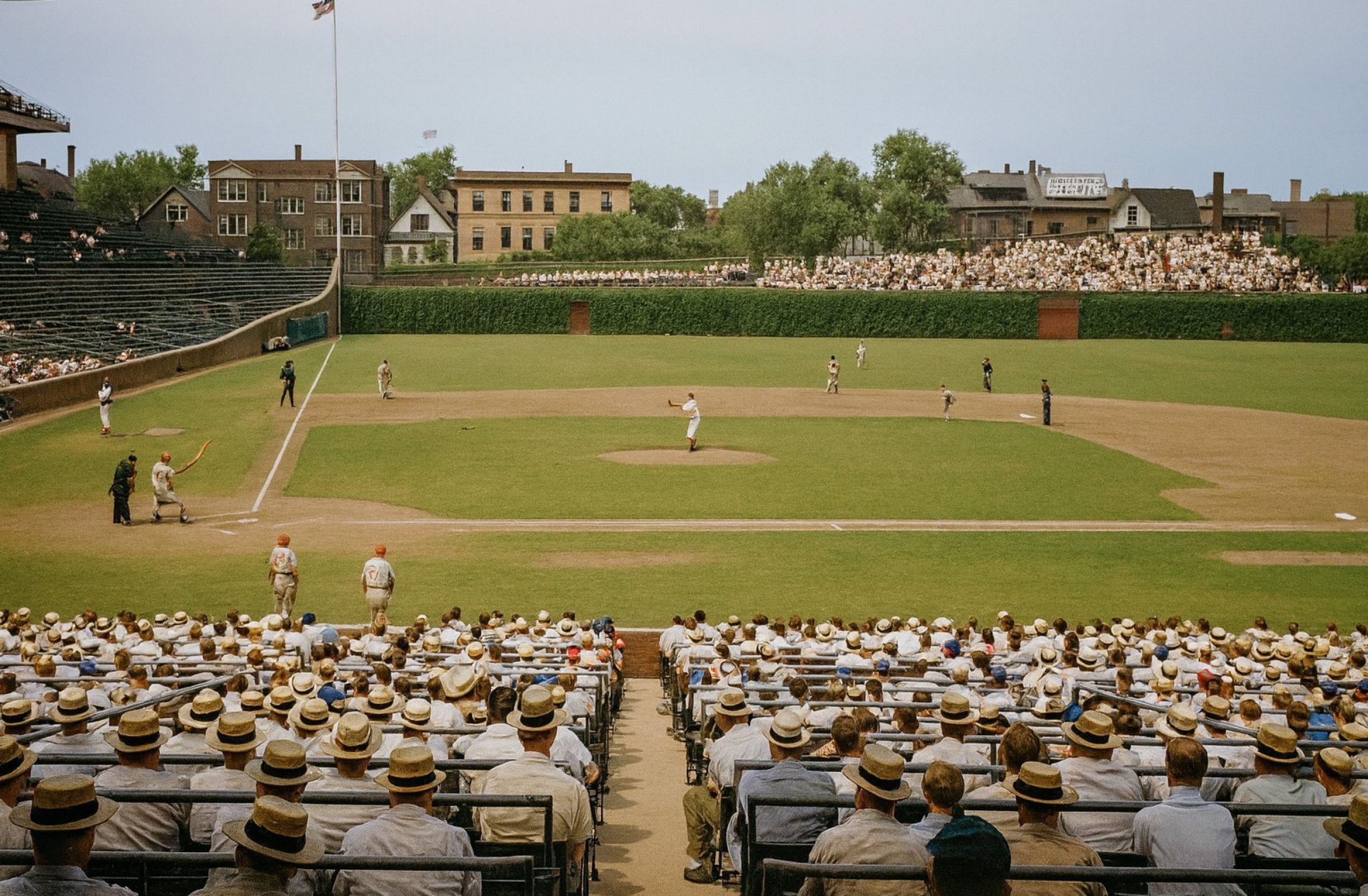
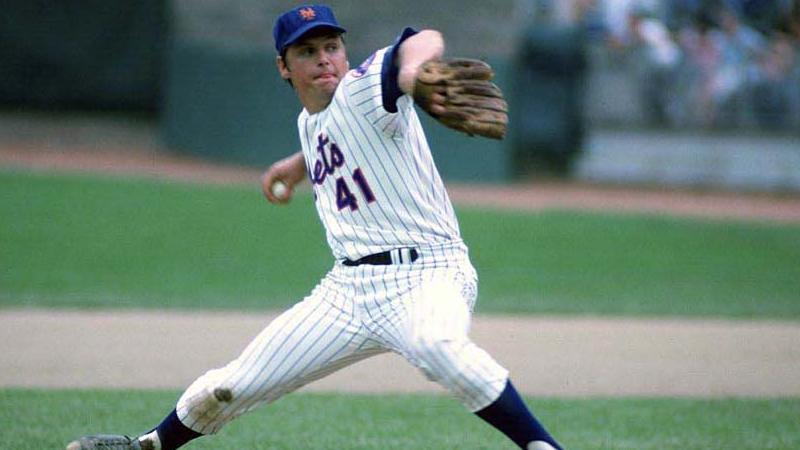
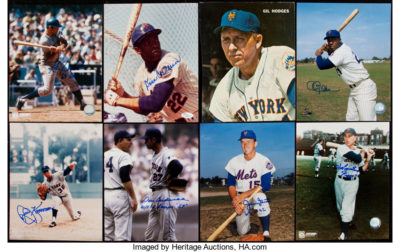
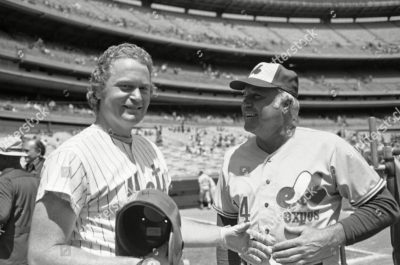
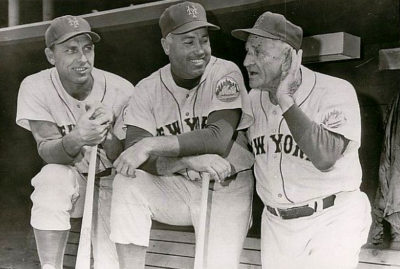
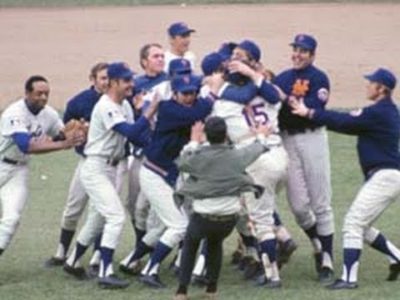
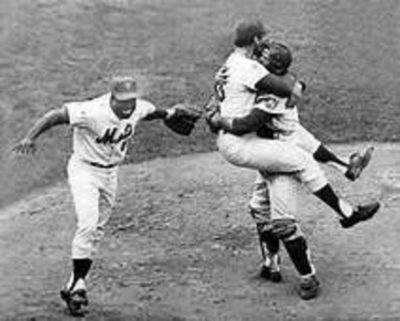
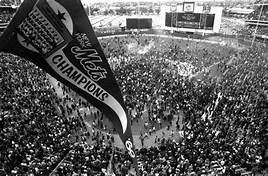
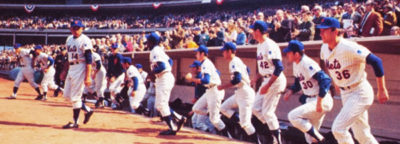
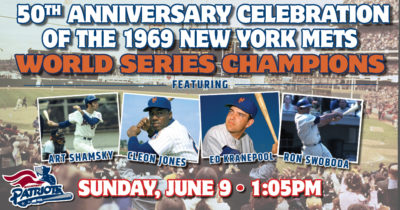
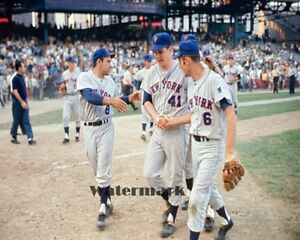
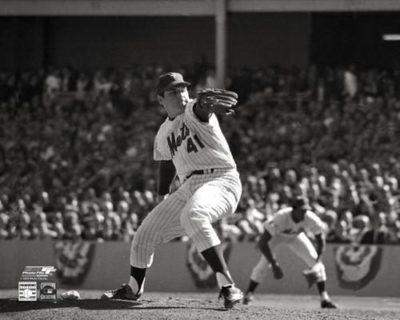
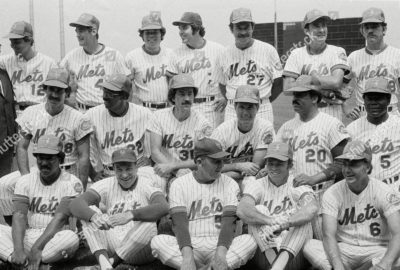
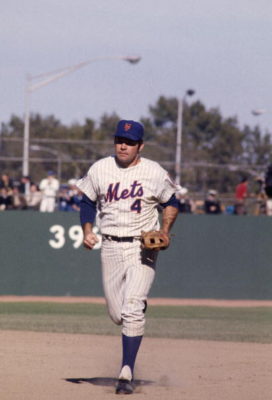
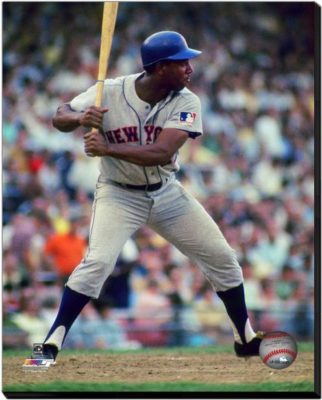
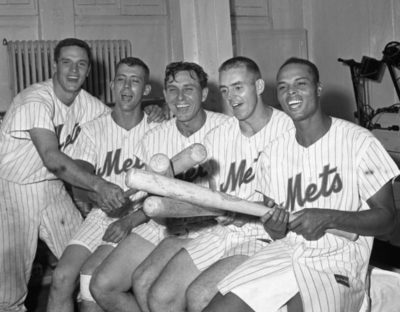
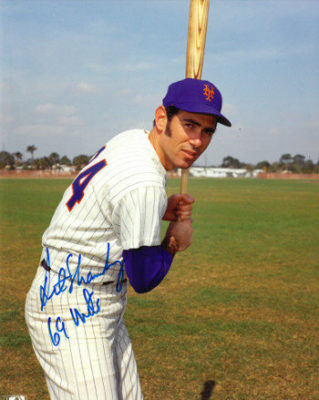
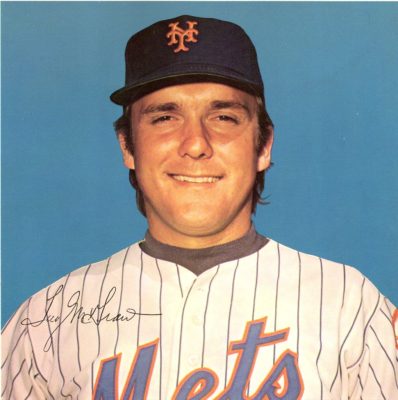
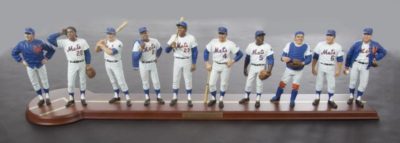
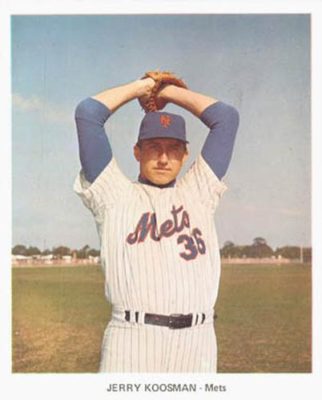
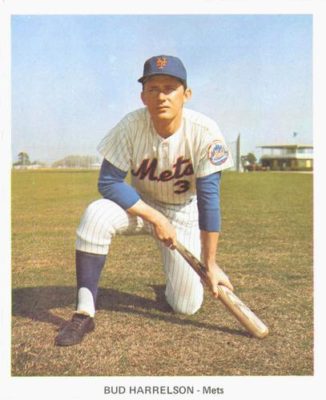
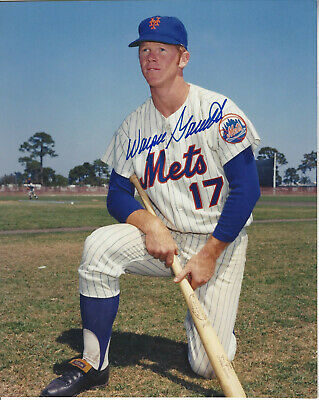
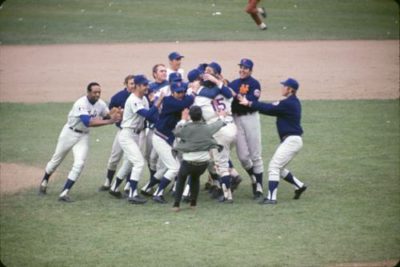
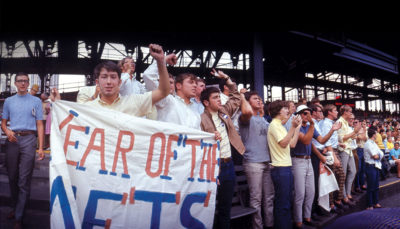
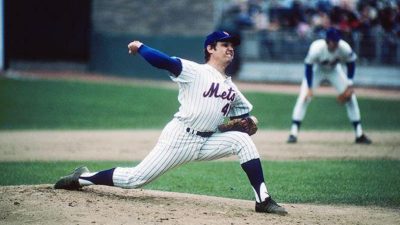
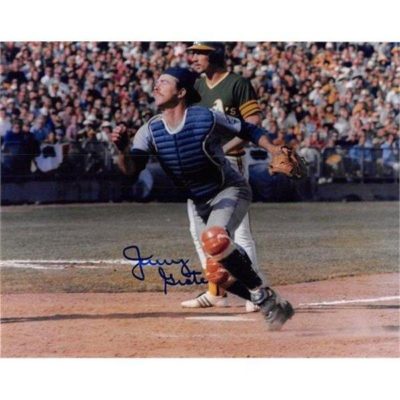
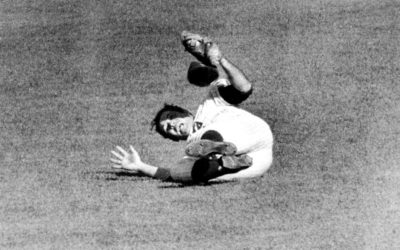
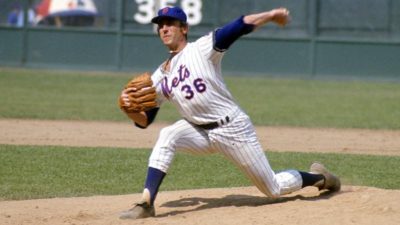
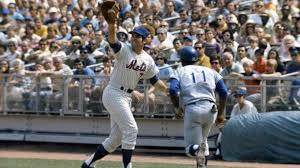
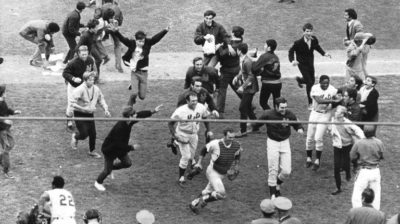
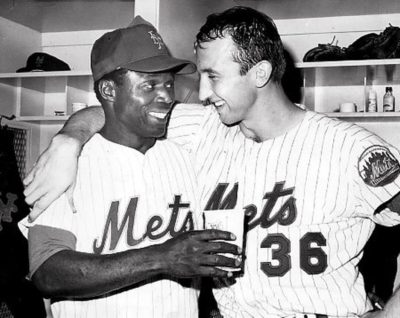
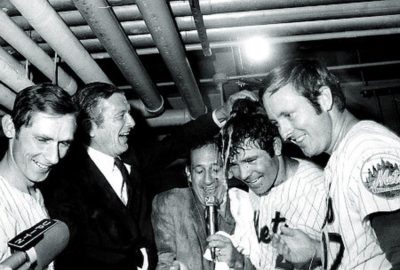

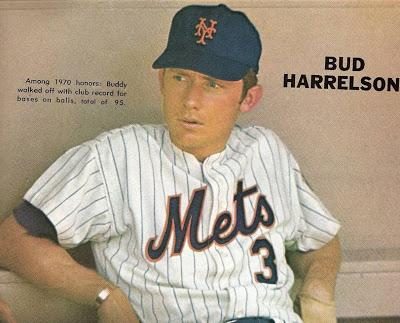
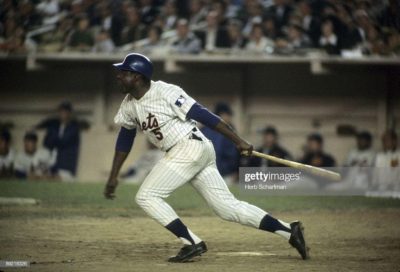
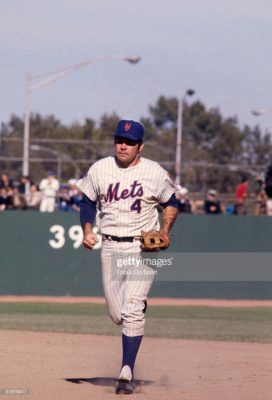
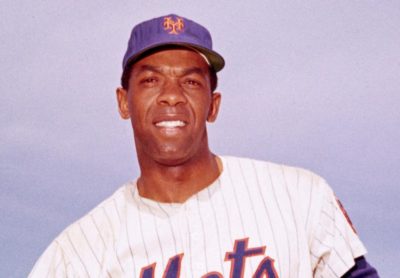
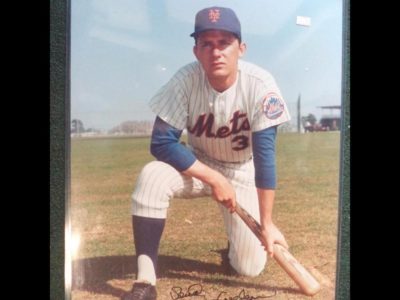

My fond if decades-old memories of The Miracle Mets are suddenly all the more vivid, thanks to Dr. Schaefer’s colorful and captivating account. Thank you!
With about two-thirds of the ’69 season gone the Metropolitans were spanked at Shea Stadium in a doubleheader by the cellar-dwelling Astros, which left them sporting a solid-if-unspectacular 55-43 record. They then caught fire, went 45 and 19 the rest of the way, and sprinted to the division title by 8 full games over Gary’s beloved “Baby Bears.”
I bring that up because their left-fielder, Cleon Jones, claims the “difference maker” in the race was (a lovable) Gil Hodges, who quietly but insistently pulled him from the second game after watching Johnny Edwards stretch a double out of an arguably routine base-hit to left. According to Jones, his teammates and he “took notice” (to put the matter rather mildly), and it was then — and precisely then — that the Mets took flight.
It’s hard to think of a team that played over its head more dramatically and relentlessly than the ’69 Mets, coming down the stretch. Much of the credit is due The Great Gil for that, in my slightly slanted opinion.
(And credit now to Bill Schaefer, too, for bringing that fateful season to life again after all these years.)
Thanks Michael…I conmpletely agree with everything you said.
Thanks, Michael and Gary for your nice comments. Good point about Cleon and that defining moment, Dr. K.
The Mets certainly seemed to be the beneficiaries of Divine Intervention during that miracle year. But the Cubs were loaded in 1969 and were done a disservice by Manager Leo Durocher. As great as The Lip was through the mid-50’s, as a pilot with his finger on the pulse of his teams, he perhaps “stayed too long at the fair.”
Leo, according to more than one Chicago player, felt the need to prove how tough he was at all times. He showed no mercy if a player made a bad play in a big spot. And once, apparently, berated pitcher Kenny Holtzman in front of the team, using an ethnic slur.
But make no mistake The Metsies deserved the crown.
Can’t agrue with any of that Bill. Plus Leo drove his players into the ground while Gill rotated his guys and kept them fresh for the stretch run. The Cubs were totally spent by September.
The Seaver interview in Philly was certainly a night Bill would always cherish as I would too. I was 18 in ’69 and loved every minute of the “Miracle Mets” (Jerry Koosman never agreed with that nickname) even though I was a Dodger fan. The young Mets were so vibrant, fresh and exciting and Gil Hodges was outstanding as skipper. I must say though that I never saw a luckier team but remember Branch Rickey’s famous words – “Luck is the residue of design.” Great piece Bill. You’re the best!
………….. and I must also note that Leo did a horrible job in totally mismanaging the Cubs that season and in ’70, ’71 and until he was let go just before the 1972 All-Star break.
Thanks, Monte! From The World’s Greatest Fan, your words mean a lot.
A shame about Leo. For my money, he was the greatest Manager from the 40’s right through the mid-50’s. Even as an ultra critical kid fan, I never second guessed his moves. His hunches were always on target and the Giants players loved him back in the day.
Hmm. Some despised The Mouth That Roared the minute he bolted from Brooklyn. Go ahead — ask me how I know.
Hey Bill.
Really enjoyable piece on a season I remember very well. Was the Sports Editor of a daily paper in Greenwich, CT., then and followed them very closely. The Greenwich Chief of Police gave me tickets to the divisional clinching game against the Braves, which was a wild extravaganza. The fans literally tore up the field after the Mets won. Also participated in a press conference with Seaver and his wife at Bloomingdale’s Department store in Stamford after that season. Very different from your experience, but don’t want to detail here. Will tell you about it some time. By the way, I always felt that Jerry Koosman was pretty much as good as Seaver in both ’68 and ’69, a great big game pitcher. Interviewed some Mets players for a book about the season some years ago. At one point the hitters complained that opposing pitchers were throwing at them and the Mets pitchers weren’t retaliating. I believe it was Ed Charles who told me that Koosman was the first guy to step up, saying, “Koosman would throw the ball right through you.” Too bad he hurt his arm, but still had a fine career.
How Mike?
I meant the Giants players liked Leo, Michael, from ’50 until the move. But go ahead, enlighten us.
Great hearing from you, Bill. Would love to hear about your press conference with The Franchise. I may have caught him on a good day.
You’re right, Koosman was a better big game pitcher than Seaver. Tom lost the first game in ’69 and had it not been for Swoboda in game four, he might well have lost that game. If the ball by Brooks R. is “down and through” the Series could have turned on a dime the other way. For me, Ron’s incredible grab was the turning point.
Thanks for the nice comment.
Bill
Having shamelessly taken an enlightening conversation about the ’69 Mets into deep left field for a remotely-related chat about The NY Giants and The All-American Out, I owe it to Monte and Bill to confess that Leo Durocher was actually pretty outstanding (in these old eyes) on at least three levels: As a rough-and-tumble field general for my beloved Dodgers in the 1940s; a rival manager who gave me fits of heartburn and despair in the ’50s, and as one of Brooklyn’s single-minded and outspoken champions of Jackie Robinson — along with Eddie Stanky incidentally, whom I also adored as a Dodger then resented when he went across town for the singular and sinister purpose of making my boyhood as miserable as possible I am sure.
When Leo left Flatbush for Coogan’s Bluff in the summer of ’48 it was easy enough, apparently, for Laraine Day, listening to a Dodger game at the time, to flip the radio off and routinely transfer her allegiance to the hated Jints — but I, who lacked the maturity and supportive perspective of one of The Lip’s several brides, could never make the switch. Not then, not later, not never. Leo Durocher was Public Enemy Numero Uno from then on, or at least until Lee Harvey Oswald came into view.
Well, so much for comic relief. Thanks for playing along, and now back to baseball!